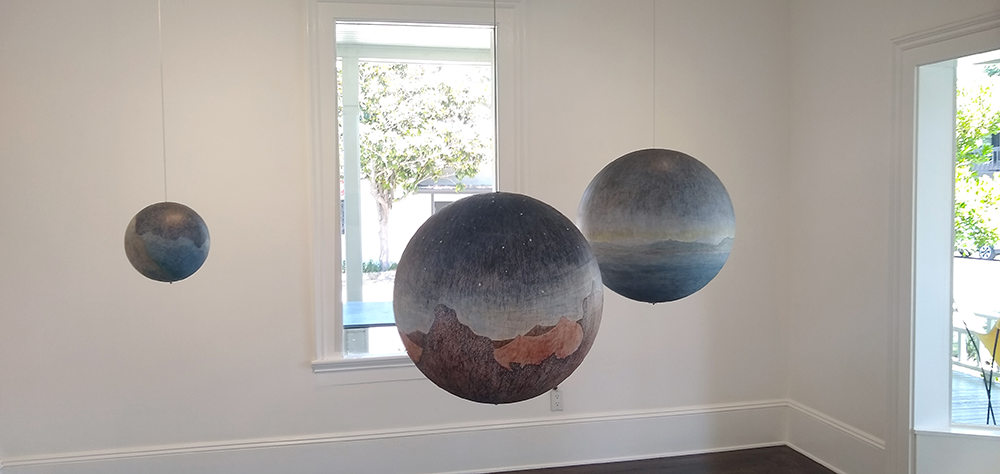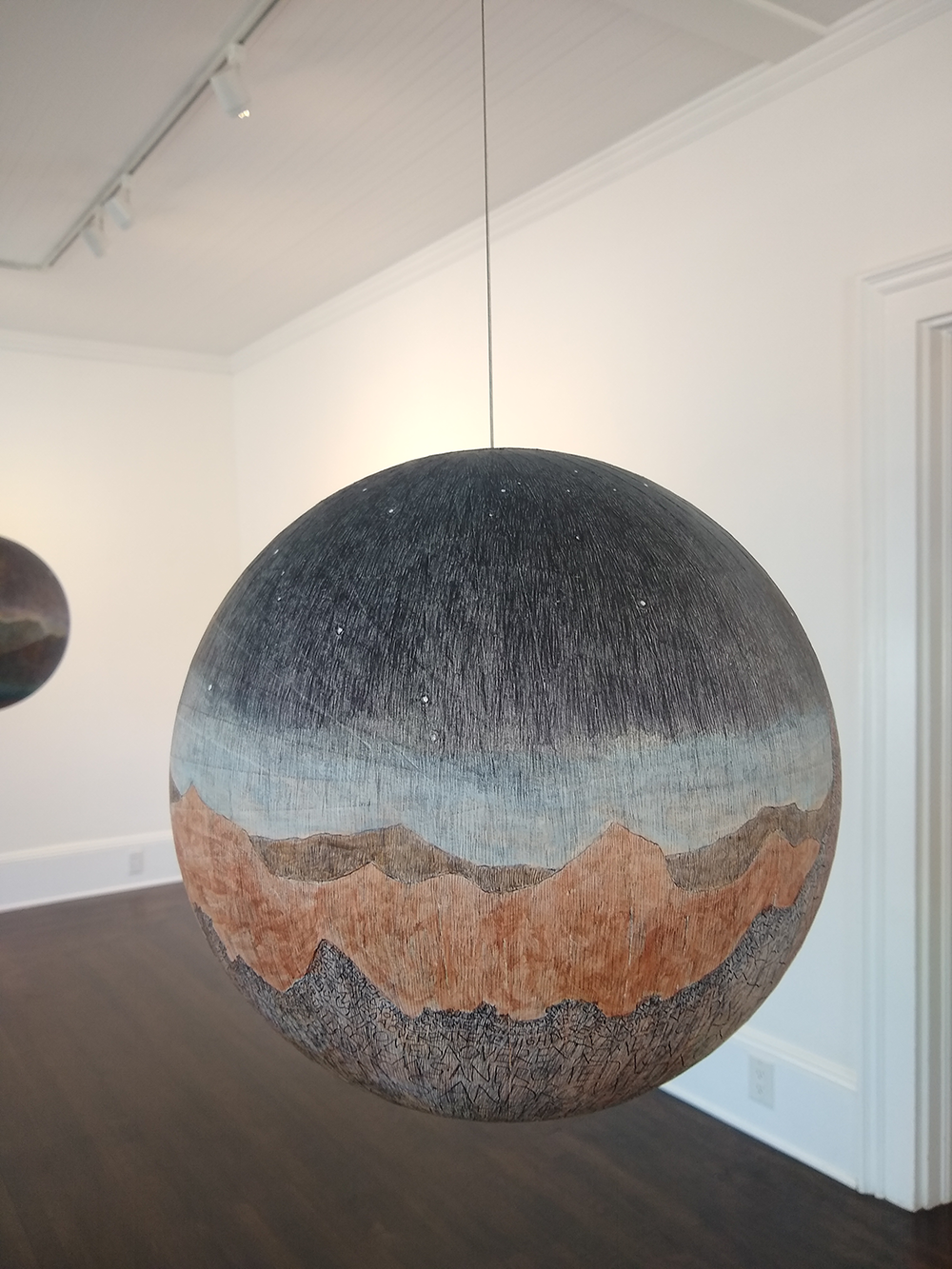Works on paper by Russell Crotty are a mix of travel journals, celestial cartography, landscape sketches, stream of consciousness narration, auric cross-hatched impressionism, and sculptural installation. Their palette is that of desert and the night; their imagery of constellations and rock formations are those of both the world and the imagination. In both long works on paper that unfurl in scrolls and in suspended spherical drawings, “NOCTURNES: Refrains from the Backcountry” continues and expands Crotty’s hybrid interest in the phenomenology and interpretation of the natural world.
The handwriting is a visual device of drawing, its tight places and wide-open spindly architectures create and frame moments of colored grounds, which are the ground. The scrawl in Extreme High Desert Boulder Problems (2022, 12-inch diameter; all works: ink and gouache on paper on fiberglass sphere,) endlessly repeats its eponym, like a mantra or madman’s obsession; its depiction of the landscape contains the widest variations in color, brightness and boulder contour. Far North (2011–22, 24-inch diameter) offers a litany of things that are different, unique or absent about the top of the world — “doomsday preppers, enterprising clam-diggers, seaweed chaos, a flannel paradise, mill towns, fog and rain, more coffee, few postmodern critics.” Some of it is outright funny, anecdotal almost, clearly culled from direct observation; more often it’s semi-obscure and delicately emblematic, like poetry.

Russell Crotty, NOCTURNES: Refrains from the Backcountry, 2022, installation view. Courtesy the artist.
The writing is nearly always an element of texture, encapsulating the geological surfaces upon which the viewer stands, in the pictorial space and in the world. Unique equatorial ridgelines divide the spheres roughly in half, at the horizon; bands of crepuscular light peek from behind the crags, launching upward toward a vaulted sky populated with long-studied astronomy, organic but intentional. Receding stacks of hills and mountains in incremental tones and hues create space and scale between the viewer and the distances. It’s impossible to ever see these drawings in their entirety at once; you must move, to be in motion, to, in fact, orbit them, mimicking the gliding tracks of heavenly bodies themselves.
Crotty’s drawing style itself is an impossible amalgamation of unfathomable thousands of flicking strokes of ink, the subtle hombres of color radiating, like the light, from prepared gouache grounds. The mark-making is thick and thin and layered like the terrain itself, evocative, optically onomatopoeic. In the case of the spheres, the whole of the scene is executed after the paper has been mounted, so that the drawing takes place on the globe, taking its curvature into account, and thus is at one with the orb and sits comfortably on its surface like a skin or the weather. A nocturne is a study of night built from swells of repetition and contrast; it’s a dreamy, pensive form of music — in this case, literally the music of the spheres.


